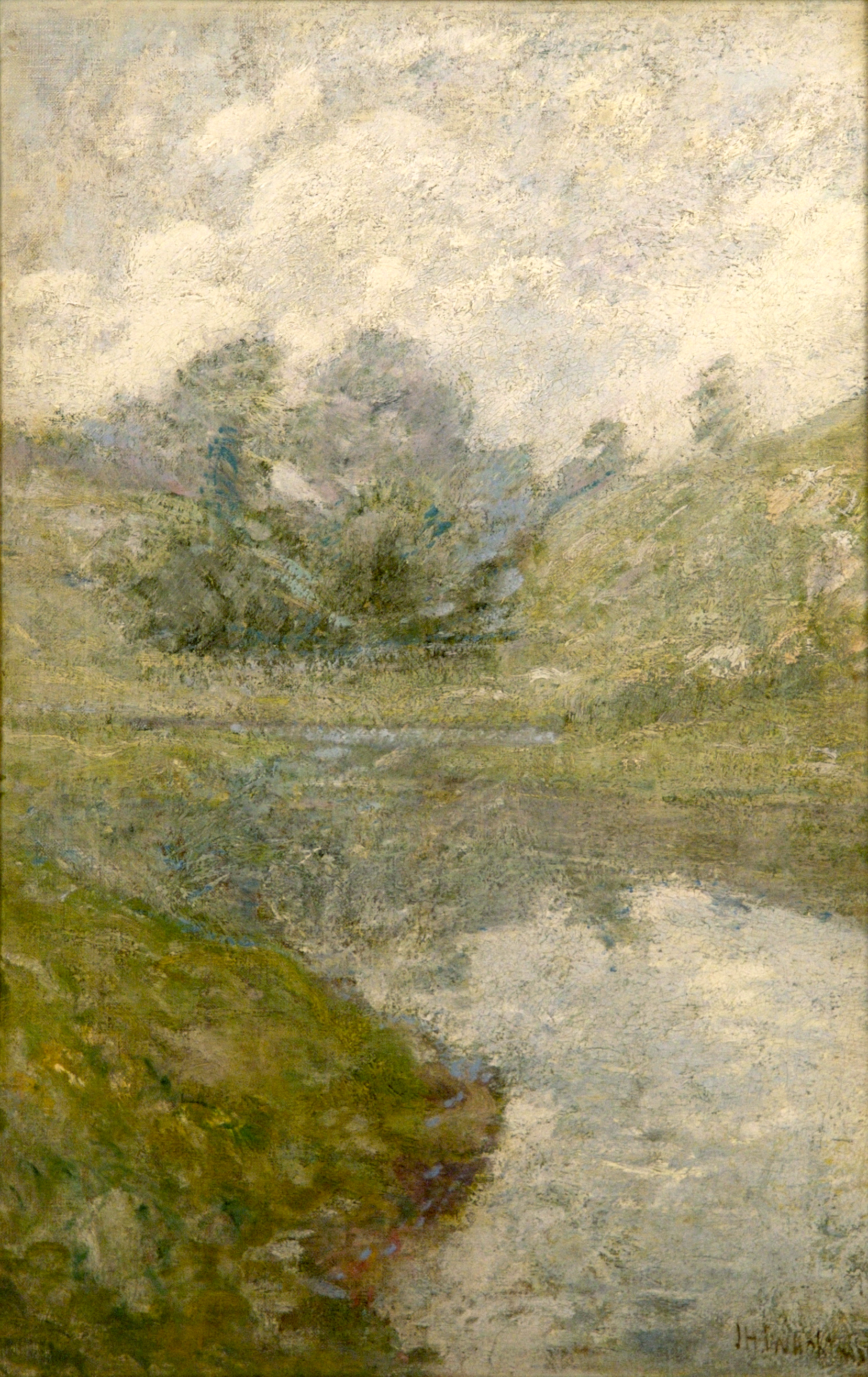John Henry Twachtman
“A cloudy sky to make it mysterious and a fog to increase the mystery. Just imagine how suggestive things are.”
John Henry Twachtman (1853-1902) was an Impressionist painter and founding member of The Ten whose light-filled, near-monochromatic canvases frequently evoked Whistlerian Tonalism and Japanese woodblock prints.
Twachtman was born in Cincinnati, Ohio, training first at the Ohio Mechanics Institute, then the McMicken School fo Design under the tutelage of Frank Duveneck. In 1875, at Duveneck’s urging, Twachtman traveled to Munich to study at the Royal Academy of Fine Arts, where he picked up a propensity for dark tones and heavy brushwork. His stint at the Académie Julian in Paris between 1883 and 1885 reversed his artistic course, lightening both his hand and his palette. Here he began to develop a true signature — ethereal, atmospheric landscapes in greens, whites, and greys, with little representational detail.
In the late 1880s Twachtman returned to the United States, coming to settle on seventeen acres of farmland in Greenwich, Connecticut. Many of the landscapes from the last decade of his life were made on this property. His winter images, awash in subtle gradations of white and the remarkable delicacy required to represent freshly fallen snow, became especially beloved, with one critic remarking he was a “poet of the brush.” Though Twachtman had trouble selling his work in his lifetime, he was hugely influential in launching a movement in American Impressionism within the Cos Cob artistic community.
